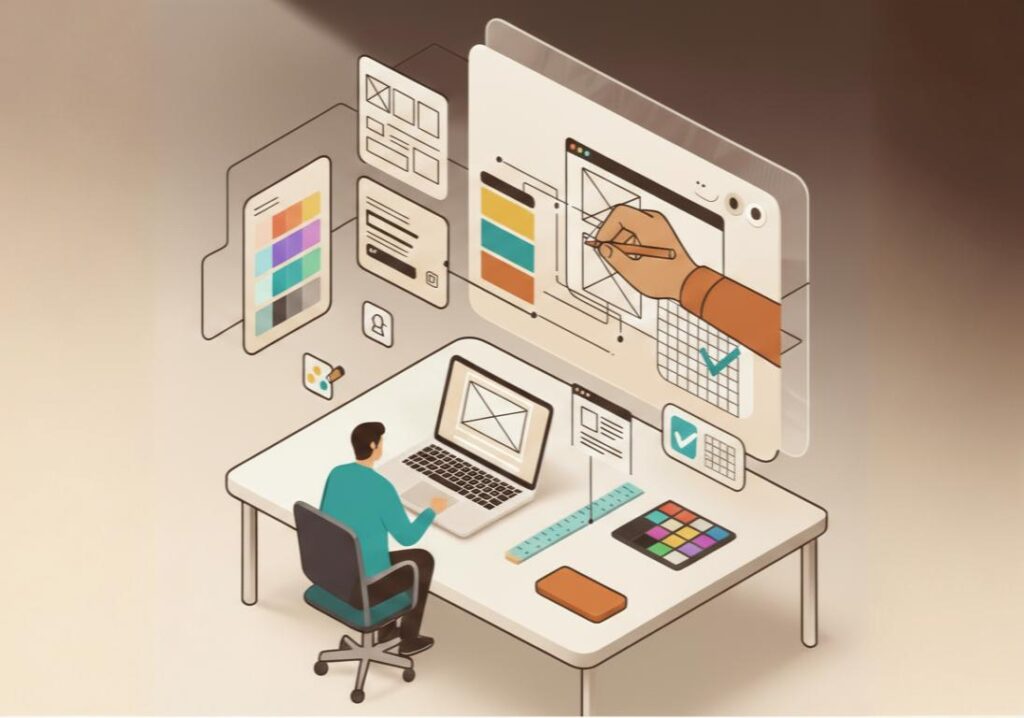
Incorporating good visual design practices into your learning projects
In our last post, we talked about the benefits of good visual design practices in e-learning, from boosting information retention to cultivating an emotional connection to the training materials. And while visual design can often be seen as the realm of a Graphic Designer, there are definitely things we can do as Instructional Designers and Developers to deliver clean, stylish, and impactful visuals.
Below is the shortlist of key activities we use at Optivly that help us integrate good visual design practices into our work.
| Action: Audit existing modules for design gaps Critically review current content for layout, navigation, clutter, and accessibility issues. How partnering with us can help: We provide expert audits revealing usability and design pain points, with practical recommendations to improve impact. |
| Action: Bring designers into projects early Involve visual designers and UX experts at ideation/storyboarding stages, not just to add final touches. How partnering with us can help: Our design specialists are brought into the project conversations early on to ensure brand alignment and learner-centric design from the start. |
| Action: Use storyboards and prototypes Develop early visual mock-ups to gain stakeholder and learner feedback before full development. How partnering with us can help: We facilitate rapid prototyping, enabling testing and iterative improvements that reduce costly late-stage revisions. |
| Action: Employ visual design principles in your work Lean on visual fields like Graphic Design, Art, and Media to sculpt a set of visual design principles that guide layout and graphic choices. How partnering with us can help: Our team is trained on the fundamentals of visual design and can help elevate the look and feel of your learning in the business. |
| Action: Develop a visual style guide for your learning Document consistent use of colours, fonts, icons, and imagery across courses to maintain cohesive identity. How partnering with us can help: We co-create style guides aligned with your brand, ensuring every learning asset “looks and feels” authentically yours. |
| Action: Prioritise accessibility from the start Embed accessible design principles early, including colour contrast, font legibility, alt-text, and navigation. How partnering with us can help: Our accessibility experts guide compliance with WCAG standards and inclusive design best practices. |
| Action: Leverage interactive & multimedia elements thoughtfully Use animations, hover effects, and videos carefully to enhance engagement without distraction. How partnering with us can help: Our creative team designs balanced multimedia-rich experiences optimised for varied learning styles and devices. |
| Action: Pair great visual design with meaningful storytelling Use narrative design and storytelling as part of the instructional design to give an anchor for the visuals and tell a holistic story. How partnering with us can help: Our team can work with you to reimagine the content into an engaging script, branching scenario, character-driven narrative, or immersive universe. |
As you can see, good visual design has a much bigger purpose than simply making your courses look “pretty”—it actively enhances learners’ ability to navigate content, understand complex information, stay motivated, and feel included. These benefits translate into measurable improvements in engagement, retention, and organisational credibility, making a compelling case for investing time and resources into thoughtful design from the start.
So, if you haven’t already, it might be time to start thinking about the good visual design practices you want to start employing in your business. Having a clear vision about the message you want to deliver as a business will only help provide clarity for both the teams creating the learning, and the learners themselves.
You can find out more on some of these practices by visiting out posts page at the link – Blog – Optivly.
